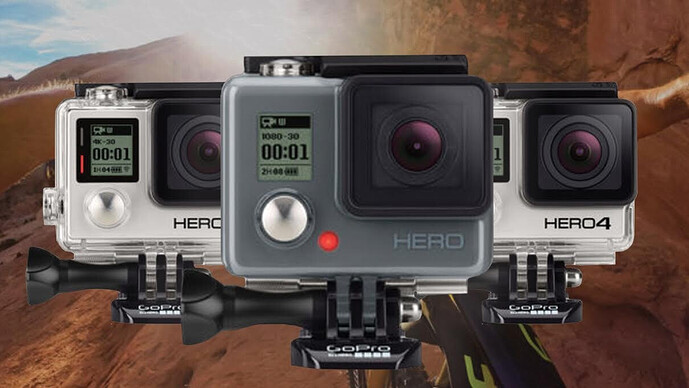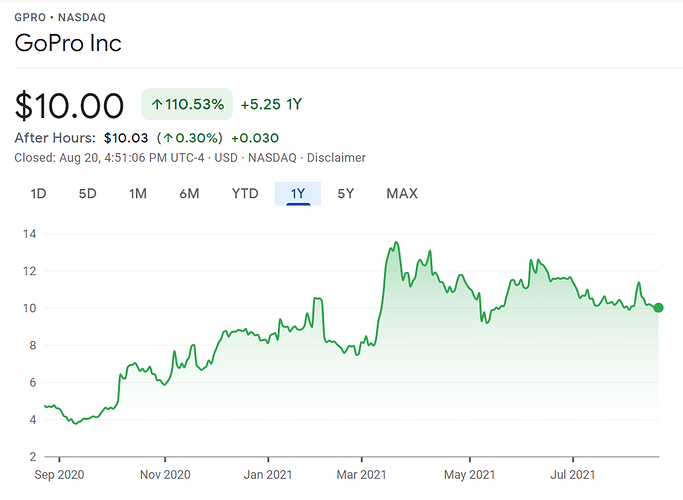GoPro’s 10 Biggest Blunders
Posted Jan 18, 2018 - http://host.madison.com/business/investment/markets-and-stocks/gopro-s-biggest-blunders/article_a41f974e-1388-5da0-b4a7-9aefc9650bb1.html
Theta mentioned in #8
Does not explicitly mention developer community issues. But items #7 and #8 talk about poor software development, which could be argued has to do with DevRel.
GoPro’s (NASDAQ: GPRO) stock recently sank to all-time lows after the action camera maker cut its fourth-quarter sales forecast, slashed hundreds of jobs, killed its drone business, and reduced the price of its flagship Hero 6 camera by $100 to $399.
GoPro originally expected its fourth-quarter sales to fall 11%-15% annually, but it now anticipates a much uglier drop of 37%. The price cut on the Hero 6 will reduce the quarter’s sales by $80 million.
GoPro’s Fusion camera. Image source: GoPro.
GoPro cut 250 jobs, but it’s still doubtful that the company can post a profit this year. So how did GoPro go from hero to near-zero in just three and a half years? Let’s look back at its ten biggest blunders to find out.
-
Empty media promises
In GoPro’s S-1 filing, the company claimed that it would become “an exciting new media company.” The entertainment unit, led by former Skype CEO Tony Bates, initially focused on gaining followers on YouTube and other social media platforms.
It briefly produced original content and created a licensing and revenue-sharing platform for content creators. But none of those moves made GoPro a “media company,” and the entire unit was shuttered in late 2016. -
Its secondary offering
After making its market debut at $24 in June 2014, GoPro’s stock surged to the $80s within three months. GoPro raised $427 million during its IPO, but inexplicably priced a secondary offering at $75 per share in November. That unexpected move arguably ended the market’s early love affair with GoPro. -
The Hero 4 Session
Instead of following up its popular Hero 4 cameras with a new flagship camera in 2015, GoPro introduced the tiny Hero 4 Session, which was initially priced at $400. The price needed to be slashed twice to $200, resulting in millions of dollars in writedowns, before any buyers showed up. The costly debacle revealed that GoPro grossly overestimated its own brand appeal. -
Cannibalizing its cameras
That same year, GoPro introduced three low-end and mid-range devices – the Hero, Hero+, and Hero+ LCD – to reach more mainstream users. Unfortunately, those devices cannibalized its higher-end products and greatly lowered consumer price expectations. GoPro discontinued all three cameras in early 2016, but the damage was done. -
A pointless buyback plan
GoPro’s stock fell below its IPO price by late 2015, and the company responded by authorizing a desperate $300 million buyback plan. GoPro ended up spending only $35.6 million of that plan before it expired, but it bought back 1.5 million shares at an average price of $23.05 – a 281% premium to its current price. -
Failing to impress Foxconn
Foxconn was one of GoPro’s earliest investors, buying an 8.88% stake in the company prior to its IPO. But in late 2015, Foxconn disclosed that it had sold 30% of its shares, with reports indicating that chairman Terry Gou had lost faith in the company.
This eliminated the possibility of a strategic manufacturing partnership between the companies, which could have boosted GoPro’s profit margins. -
A slow response to software needs
GoPro also responded slowly to user demands for easier transfer and editing tools. In early 2016 it finally bought two video start-ups and integrated their tools into its PC and mobile apps. In late 2016 it finally launched a cloud backup platform alongside the Hero 5.
Unfortunately, these features arrived too late and seemed inferior to mobile-based backup tools like Alphabet’s (NASDAQ: GOOG) (NASDAQ: GOOGL) Google Photos and Apple’s (NASDAQ: AAPL) iCloud. -
Copying instead of innovating
Many of GoPro’s “new” devices also seem to be clones of other products. The Hero 4 Session looked a lot like the Polaroid Cube, its Odyssey and Omni multi-camera virtual reality rigs resembled other third-party rigs, and the Karma closely resembled a foldable “QuadBox” design patented by one of its employees.
GoPro’s 360-degree Fusion camera also owes its design to earlier products like Samsung’s Gear 360 and Ricoh’s Theta cameras. -
Misunderstanding the VR market
As enthusiasm for GoPro’s action cameras waned, the company jumped on the VR bandwagon with pricey rigs and a VR channel for its website and app. GoPro gained an early foothold in this market with its $15,000 16-camera Odyssey rigs and a “Jump VR” partnership with Google’s YouTube.
But Google eventually realized that it needed producers of cheaper VR hardware for the platform to gain mainstream appeal. That’s why it started partnering with other camera makers, including GoPro clone maker Yi Technology, in 2016. -
Underestimating DJI Innovations
Lastly, GoPro charged into the drone market without doing enough homework on market leader DJI Innovations, which dominated the high-end market with its flagship Phantom drones. Apple even prominently showcased Phantom drones at its retail stores.
Therefore it wasn’t surprising when DJI stole GoPro’s thunder with its compact Mavic Pro and Spark drones. Meanwhile, GoPro botched the Karma’s launch with an embarrassing recall – so it wasn’t surprising that this fledgling business went down in flames.

